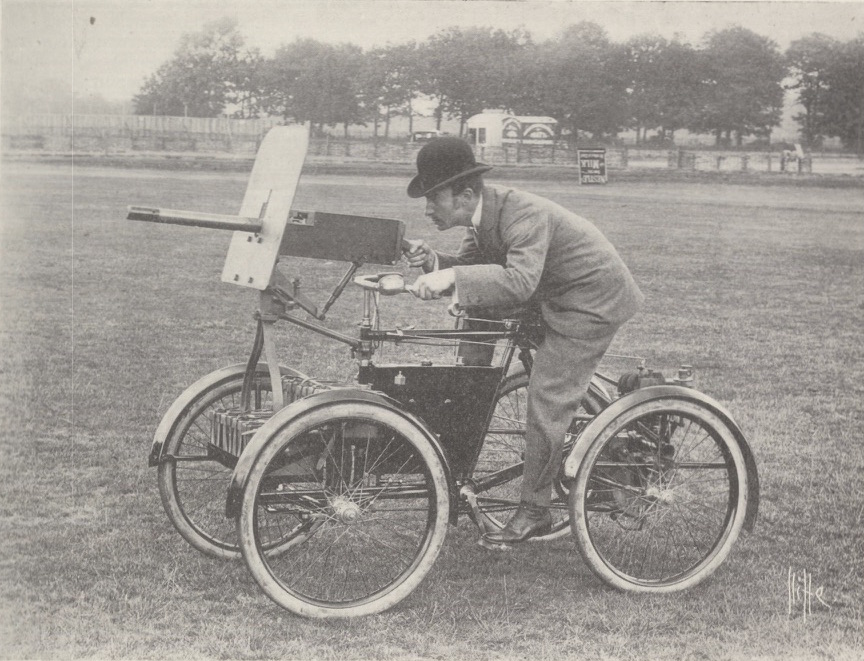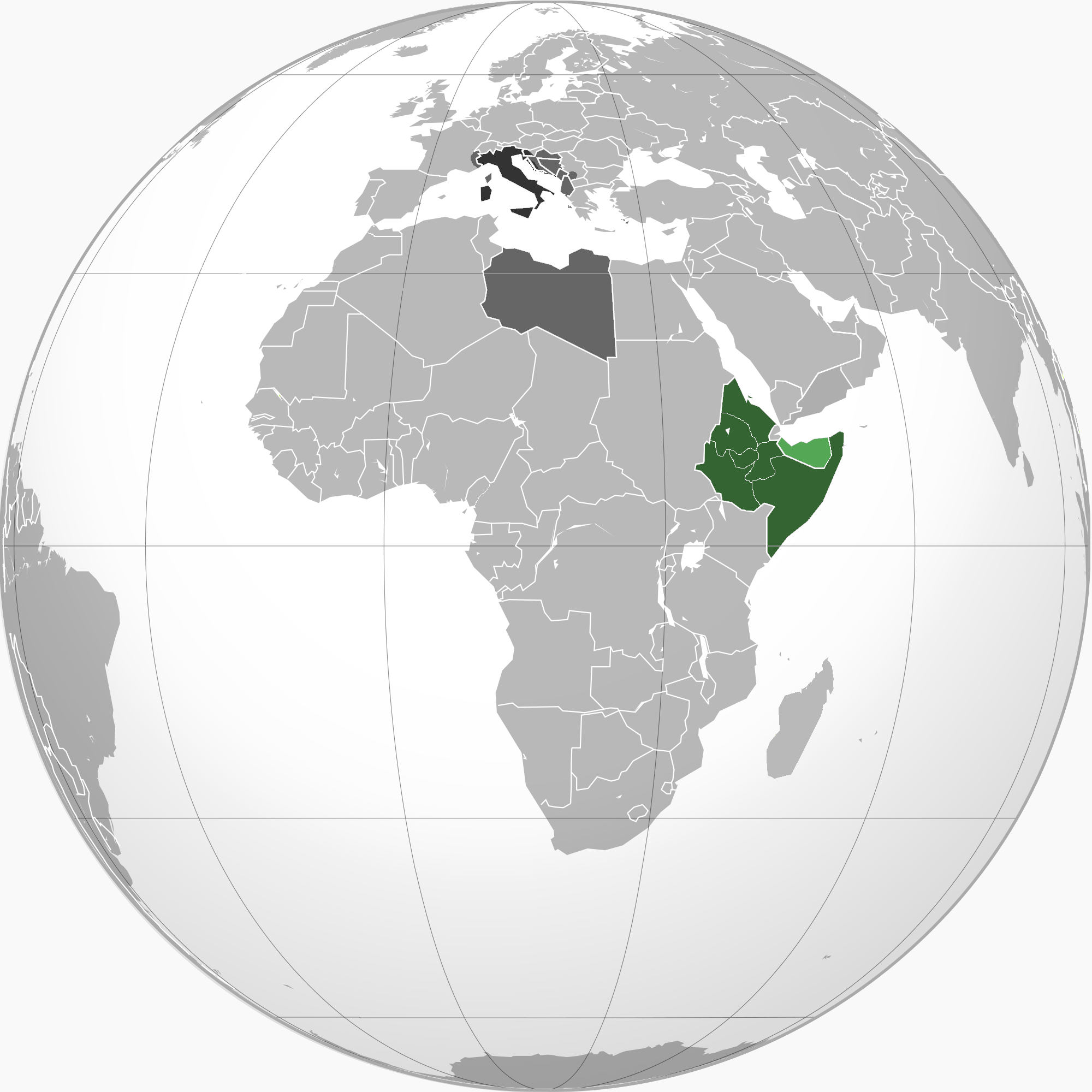|
Lancia 1ZM
The Lancia 1Z and the Lancia 1ZM were two variations of an Italian armoured car built during World War I and which saw limited service during that war, the interwar period, and during World War II. The name is often misspelled as Lancia IZM. During the First World War, the Austro-Hungarian Empire acquired a few units from the Italian front. Design In 1916, the Lancia 1Z armoured car was built by Ansaldo of Italy. It was the most common of the early Italian armoured cars. Based on a Lancia truck, the armoured car was an advanced design for its day. For firepower the vehicle was equipped with twin turret mounted machine guns. The initial ten vehicles featured a further small turret on top with yet another machine gun. This gave the vehicle considerable firepower for the time. As a result of experiences in World War I, steel rails were installed over the top of the vehicle for cutting wire. Having had good results with the early car, another production run of a slightly modified ve ... [...More Info...] [...Related Items...] OR: [Wikipedia] [Google] [Baidu] |
Armoured Car (military)
A military armored ( also spelled armoured) car is a wheeled armoured fighting vehicle, historically employed for reconnaissance, internal security, armed escort, and other subordinate battlefield tasks. With the gradual decline of mounted cavalry, armored cars were developed for carrying out duties formerly assigned to light cavalry. Following the invention of the tank, the armoured car remained popular due to its faster speed, comparatively simple maintenance and low production cost. It also found favor with several colonial armies as a cheaper weapon for use in underdeveloped regions. During World War II, most armoured cars were engineered for reconnaissance and passive observation, while others were devoted to communications tasks. Some equipped with heavier armament could even substitute for tracked combat vehicles in favorable conditions—such as pursuit or flanking maneuvers during the North African campaign. Since World War II the traditional functions of the armor ... [...More Info...] [...Related Items...] OR: [Wikipedia] [Google] [Baidu] |
Albanian Kingdom (1928–39)
Kingdom of Albania may refer to: * Kingdom of Albania (medieval) * Albanian Kingdom (1928–1939) * Kingdom of Albania in personal union with Italy (1939–1943) The Kingdom of Albania was in personal union with the Kingdom of Italy following the Italian invasion of Albania in 1939 and until the German occupation in September 1943. It is also referred to as Italian Albania or Greater Albania, and was a ... * Albanian Kingdom (1943–1944) {{disambiguation ... [...More Info...] [...Related Items...] OR: [Wikipedia] [Google] [Baidu] |
Nazi Germany
Nazi Germany, officially known as the German Reich and later the Greater German Reich, was the German Reich, German state between 1933 and 1945, when Adolf Hitler and the Nazi Party controlled the country, transforming it into a Totalitarianism, totalitarian dictatorship. The Third Reich, meaning "Third Realm" or "Third Empire", referred to the Nazi claim that Nazi Germany was the successor to the earlier Holy Roman Empire (800–1806) and German Empire (1871–1918). The Third Reich, which the Nazis referred to as the Thousand-Year Reich, ended in May 1945, after 12 years, when the Allies of World War II, Allies defeated Germany and entered the capital, Berlin, End of World War II in Europe, ending World War II in Europe. After Hitler was appointed Chancellor of Germany in 1933, the Nazi Party began to eliminate political opposition and consolidate power. A 1934 German referendum confirmed Hitler as sole ''Führer'' (leader). Power was centralised in Hitler's person, an ... [...More Info...] [...Related Items...] OR: [Wikipedia] [Google] [Baidu] |
Armistice Of Cassibile
The Armistice of Cassibile ( Italian: ''Armistizio di Cassibile'') was an armistice that was signed on 3 September 1943 by Italy and the Allies, marking the end of hostilities between Italy and the Allies during World War II. It was made public five days later. It was signed on September 3rd by Major-General Walter Bedell Smith for the Allies and Brigade-General Giuseppe Castellano for Italy. The armistice's signing took place at a summit in an Allied military camp at Cassibile, Sicily, which had recently been occupied by the Allies. The armistice was approved by both Victor Emmanuel III and Marshal Pietro Badoglio, who was serving as Prime Minister of Italy at the time. The signing of the armistice was kept secret on that day, and was announced to the media on September 8th. Nazi Germany responded by attacking Italian forces in Italy, southern France and the Balkans, and freeing Benito Mussolini on 12 September. The Italian forces were forcefully disbanded in the north an ... [...More Info...] [...Related Items...] OR: [Wikipedia] [Google] [Baidu] |
Axis Powers
The Axis powers, originally called the Rome–Berlin Axis and also Rome–Berlin–Tokyo Axis, was the military coalition which initiated World War II and fought against the Allies of World War II, Allies. Its principal members were Nazi Germany, Fascist Italy, Kingdom of Italy and the Empire of Japan. The Axis were united in their far-right positions and general opposition to the Allies, but otherwise lacked comparable coordination and ideological cohesion. The Axis grew out of successive diplomatic efforts by Germany, Italy, and Japan to secure their own specific expansionist interests in the mid-1930s. The first step was the Italo-German protocol of 23 October 1936, protocol signed by Germany and Italy in October 1936, after which Italian leader Benito Mussolini declared that all other European countries would thereafter rotate on the Rome–Berlin axis, thus creating the term "Axis". The following November saw the ratification of the Anti-Comintern Pact, an anti-communis ... [...More Info...] [...Related Items...] OR: [Wikipedia] [Google] [Baidu] |
East African Campaign (World War II)
The East African campaign (also known as the Abyssinian campaign) was fought in East Africa during the Second World War by Allies of World War II, mainly from the British Empire, against Kingdom of Italy, Italy and its colony of Italian East Africa, between June 1940 and November 1941. The British Middle East Command with troops from the United Kingdom, Union of South Africa, South Africa, British Raj, British India, Uganda Protectorate, British Kenya, Kenya, British Somaliland, Somaliland, British West Africa, West Africa, Northern Rhodesia, Northern and Southern Rhodesia, Anglo-Egyptian Sudan, Sudan and Nyasaland participated in the campaign. These were joined by the Allied of Belgian Congo, Ethiopian Empire, Imperial Ethiopian Arbegnoch (resistance forces) and a small unit of Free French Forces. Italian East Africa was defended by the (Italian East African Armed Forces Command), with units from the (Royal Army), (Royal Air Force) and (Royal Navy). The Italian forces inclu ... [...More Info...] [...Related Items...] OR: [Wikipedia] [Google] [Baidu] |
Second Spanish Republic
The Spanish Republic (), commonly known as the Second Spanish Republic (), was the form of democratic government in Spain from 1931 to 1939. The Republic was proclaimed on 14 April 1931 after the deposition of Alfonso XIII, King Alfonso XIII. It was dissolved on 1 April 1939 after surrendering in the Spanish Civil War to the Nationalist faction (Spanish Civil War), Nationalists led by General Francisco Franco. After the proclamation of the Republic, Provisional Government of the Second Spanish Republic, a provisional government was established until December 1931, at which time the Spanish Constitution of 1931, 1931 Constitution was approved. During the subsequent two years of constitutional government, known as the First Biennium, Reformist Biennium, Manuel Azaña's executive initiated numerous reforms. In 1932 religious orders were forbidden control of schools, while the government began a large-scale school-building project. A moderate agrarian reform was carried out. Home r ... [...More Info...] [...Related Items...] OR: [Wikipedia] [Google] [Baidu] |
Corpo Truppe Volontarie
The Corps of Volunteer Troops () was a Fascist Italian expeditionary force of military volunteers, which was sent to Spain to support the Nationalist forces under General Francisco Franco against the Spanish Republic during the Spanish Civil War, 1936–39. Background In July 1936, at the beginning of Spanish Civil War, most of the elite Nationalist forces were isolated in Spanish Morocco or on the Canary Islands. Meanwhile, in Spain, smaller formations of Nationalists and Guardia Civil forces were locked in combat with pro-government militias, Assault Guards and those army units which remained loyal to the leftist Popular Front government. Making the situation more difficult for the Nationalists was the fact that the Spanish Republican Air Force and Navy generally remained loyal to the government. If the Nationalist forces fighting in Spain did not receive reinforcements, the rebellion could soon fail. General Francisco Franco and the other Nationalist leaders sent emi ... [...More Info...] [...Related Items...] OR: [Wikipedia] [Google] [Baidu] |
Italian East Africa
Italian East Africa (, A.O.I.) was a short-lived colonial possession of Fascist Italy from 1936 to 1941 in the Horn of Africa. It was established following the Second Italo-Ethiopian War, which led to the military occupation of the Ethiopian Empire (Abyssinia). It encompassed Italian Somaliland, Italian Eritrea and the acquired Ethiopian territories, all governed by a single administrative unit, the Governo Generale dell'Africa Orientale Italiana. Its establishment contributed to the outbreak of the Second World War by exposing the weaknesses of the League of Nations. Italian East Africa was divided into six governorates. Eritrea and Somalia, Italian possessions since the 1880s, were enlarged with captured Ethiopian territory and became the Eritrea and Somalia Governorates. The remainder of the occupied Ethiopian territories comprised the Harar, Galla-Sidamo, Amhara, and Scioa Governorates. At its largest extent, Italian East Africa occupied territories in British Som ... [...More Info...] [...Related Items...] OR: [Wikipedia] [Google] [Baidu] |
Kingdom Of Albania (1928–39)
Kingdom of Albania may refer to: * Kingdom of Albania (medieval) * Albanian Kingdom (1928–1939) * Kingdom of Albania in personal union with Italy (1939–1943) The Kingdom of Albania was in personal union with the Kingdom of Italy following the Italian invasion of Albania in 1939 and until the German occupation in September 1943. It is also referred to as Italian Albania or Greater Albania, and was a ... * Albanian Kingdom (1943–1944) {{disambiguation ... [...More Info...] [...Related Items...] OR: [Wikipedia] [Google] [Baidu] |
East Africa
East Africa, also known as Eastern Africa or the East of Africa, is a region at the eastern edge of the Africa, African continent, distinguished by its unique geographical, historical, and cultural landscape. Defined in varying scopes, the region is recognized in the United Nations Statistics Division United Nations geoscheme for Africa, scheme as encompassing 18 sovereign states and 4 territories. It includes the Horn of Africa to the North and Southeastern Africa to the south. Definitions In a narrow sense, particularly in English-speaking contexts, East Africa refers to the area comprising Kenya, Tanzania, and Uganda, largely due to their shared history under the Omani Empire and as parts of the British East Africa Protectorate and German East Africa. Further extending East Africa's definition, the Horn of Africa—comprising Djibouti, Eritrea, Ethiopia, and Somalia—stands out as a distinct geopolitical entity within East Africa.Robert Stock, ''Africa South of the Sahara, ... [...More Info...] [...Related Items...] OR: [Wikipedia] [Google] [Baidu] |






